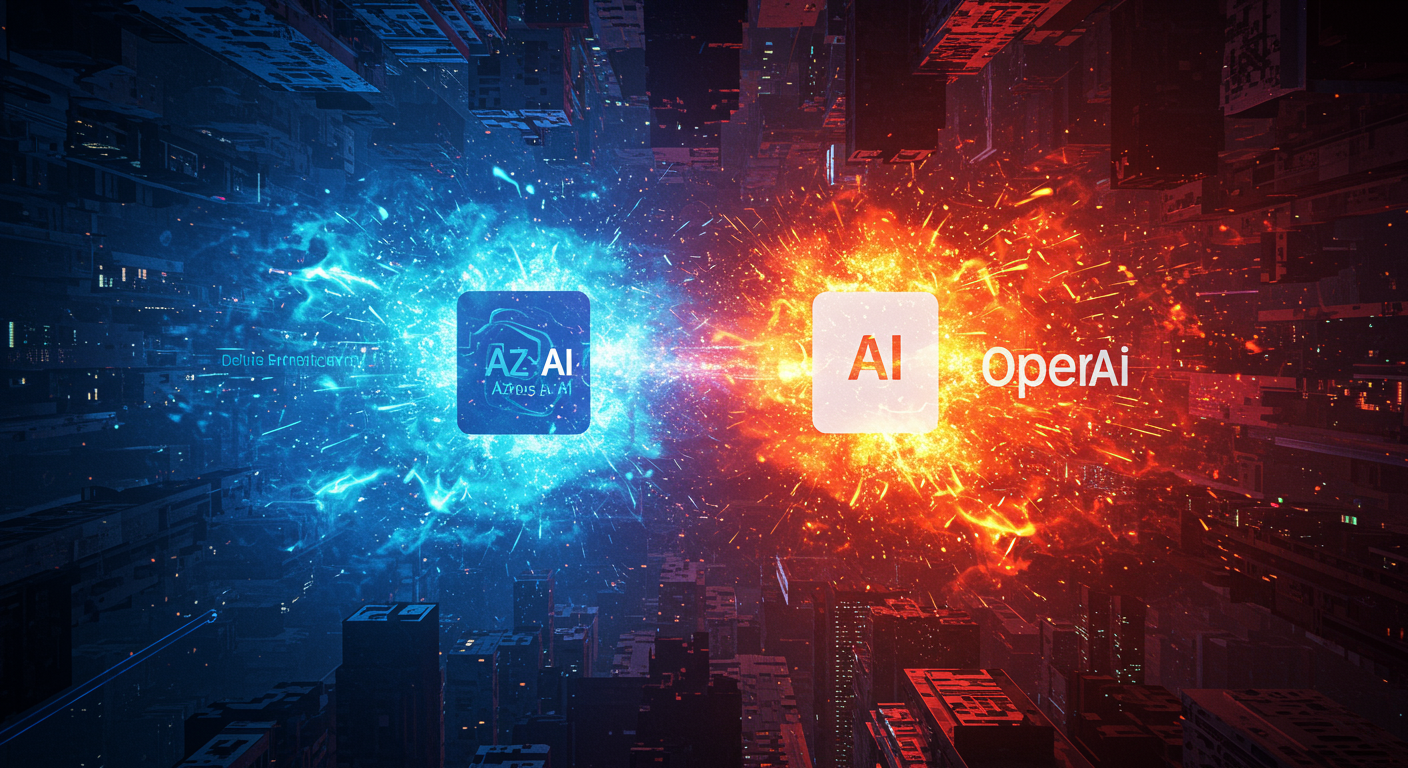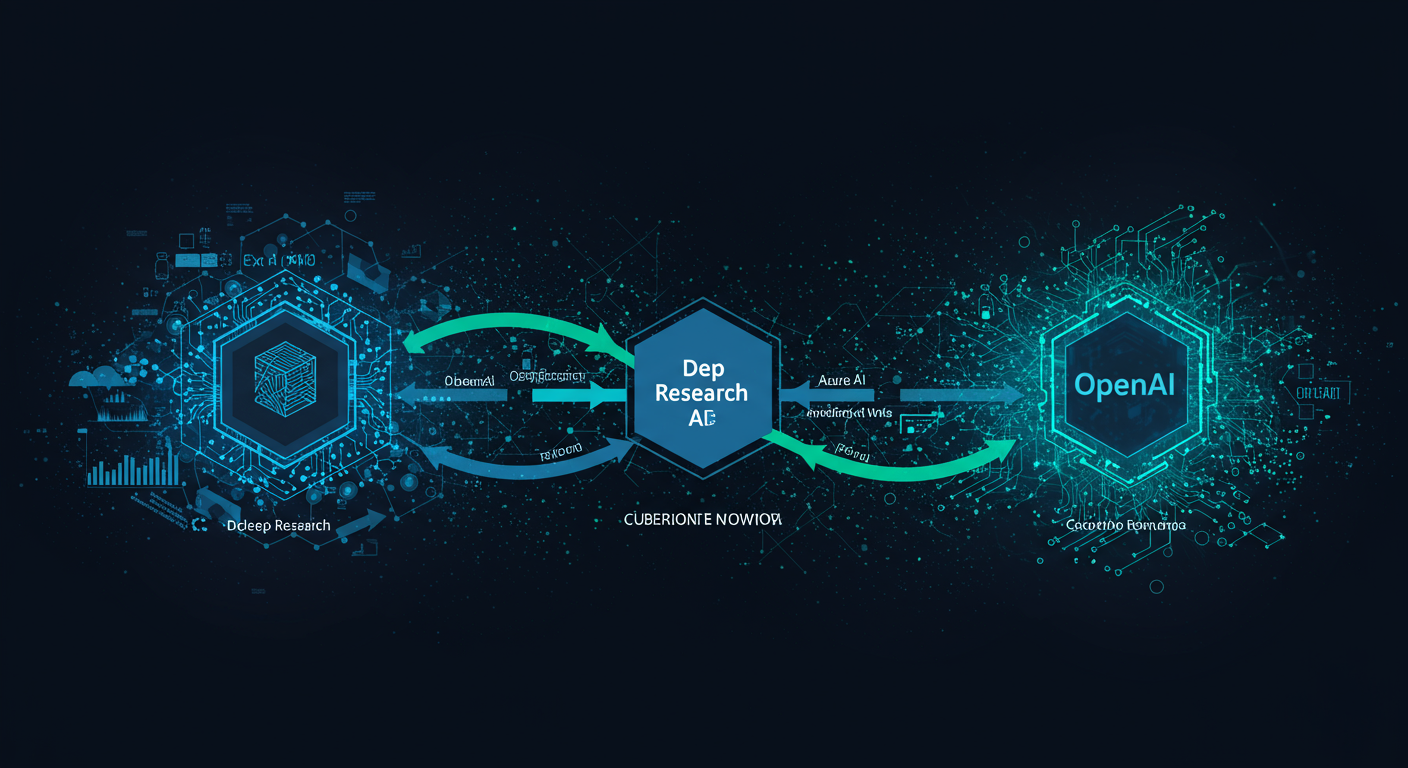The Dawn of the AI Research Agent: A Deep Dive into Azure’s “Deep Research” with OpenAI
Unpacking the Next Wave of AI Automation
John: We’ve been covering artificial intelligence for years, watching it evolve from a niche academic field to a mainstream force. But every so often, a new development comes along that feels like a genuine step-change. Microsoft’s recent announcement of “Deep Research” within its Azure AI Foundry Agent Service is one of those moments. It’s not just another chatbot or a smarter search engine; it’s the public preview of a true autonomous research agent, designed for enterprise-grade tasks.
Lila: “Autonomous research agent” – that’s a big claim, John. I’ve seen AI tools that summarize articles or find keywords, but what makes this “Deep Research” so different? Is this just Microsoft putting a new brand on the technology OpenAI already has in ChatGPT, or is there more to it for developers and businesses?
John: That’s the perfect question to start with, Lila. It’s a valid skepticism. The key difference lies in its architecture and purpose. While a consumer tool like ChatGPT is fantastic for interactive Q&A, Deep Research is designed to be an automated, programmable service. Think of it less as a conversational partner and more as a tireless, dedicated research assistant that developers can embed directly into their company’s applications and workflows using an API (Application Programming Interface – a way for different software programs to communicate) and SDKs (Software Development Kits – a set of tools for building applications).
Lila: So, it’s about taking the research capability out of the chat window and putting it to work behind the scenes, integrated into the tools businesses already use? That sounds incredibly powerful. It’s like giving every piece of software its own built-in research department.

Supply Details: Who’s Behind the Curtain?
John: Exactly. And to your point about who’s behind it, this is a product of the deep partnership between Microsoft and OpenAI. Microsoft is providing the enterprise-grade cloud infrastructure with Azure, specifically through the Azure AI Foundry. This Foundry is their platform for helping businesses build, deploy, and manage AI agents at scale. OpenAI, on the other hand, is providing the core “brains” of the operation, including a new, specialized model.
Lila: A new model? I thought this would just run on GPT-4o. What’s this special model called, and what does it do that the others don’t?
John: It’s called the `o3-deep-research` model. According to Microsoft’s documentation, this isn’t just a general-purpose model. It’s a model that has been specifically fine-tuned (a process of further training a pre-trained model on a narrower dataset to specialize its abilities) from OpenAI’s `o3` reasoning model. Its entire purpose is to excel at complex, multi-step research tasks—synthesis, analysis, and deep planning—which are a step beyond the more direct Q&A capabilities of models like GPT-4o.
Lila: So how does a developer get access? Is this a limited preview for a select few, or can anyone with an Azure account start building with it today?
John: It’s currently in public preview. This means that while it’s not yet in “general availability” (the final, fully supported stage), developers with access to Azure AI Foundry can start experimenting with it. They access it as a tool within the Agent Service. This means they can call upon Deep Research programmatically, sending it a complex query and receiving a structured, comprehensive report in return. The cost structure is also public, which shows Microsoft is serious about getting this into developers’ hands. They’re charging per million tokens (pieces of words) for both input and output, with separate, smaller charges for the “grounding” search queries it performs.
The Technical Mechanism: How the Magic Happens
Lila: Okay, let’s get into the weeds. You said it’s more than just a search. If I’m a developer and I send a request to a Deep Research agent, say, “Analyze the Q2 2025 market trends for sustainable packaging in Europe,” what happens next? Can you walk me through the process step-by-step?
John: Of course. This is where the elegance of the system really shines. It’s a multi-stage pipeline.
- Step 1: Intent Interpretation & Scoping. First, your request doesn’t go directly to the research model. It’s intercepted by a powerful general model like GPT-4o. Its job is to act as a front-door analyst. It interprets your query, understands the underlying intent, and crucially, identifies any missing details. It might even ask clarifying questions to refine the scope. For your query, it would recognize the need for recent data, specific regions in Europe, and what “sustainable packaging” entails (e.g., biodegradable, recycled, compostable).
- Step 2: Grounding with Bing Search. Once the task is clearly defined, the agent activates what Microsoft calls a “grounding tool.” This is essentially a super-powered, API-driven version of Bing Search. It doesn’t just do a simple search; it performs multiple, refined queries to retrieve a broad selection of recent, high-quality web content. This is a critical step to combat “hallucinations” (when an AI makes up facts) by grounding the entire research process in real, verifiable data from the live web.
- Step 3: Deep Synthesis with o3-deep-research. Now the star player, the `o3-deep-research` model, takes the stage. It receives the curated data from the Bing grounding step and the refined research plan. Its job is not to summarize. Its job is to *synthesize*. It reads across all the different sources, compares conflicting reports, identifies patterns, evaluates the credibility of information, and builds a comprehensive understanding. It adapts its approach as it goes, much like a human researcher would.
- Step 4: Structured Output. Finally, the process doesn’t just spit out a paragraph of text. The result is a structured, detailed report. It includes the final answer, a transparent account of the model’s reasoning path, direct quotes, and, most importantly, citations for all the sources it used. This source traceability is a massive feature for any serious enterprise or academic use case.
Lila: Wow, that’s far more sophisticated than I imagined. The grounding step with Bing seems like the secret sauce for making it reliable for businesses, and the final structured report with citations is something I know every academic, journalist, and market analyst dreams of. It moves the AI from a “black box” to a more transparent tool.

Team & Community: The People and the Ecosystem
John: Precisely. And the people driving this are key. Yina Arenas, a VP of Product in Microsoft’s Core AI division, has been a major voice in the launch, emphasizing how this empowers developers to “embed, extend, and orchestrate Deep Research-as-a-service.” It signals a clear strategy: this isn’t a standalone product but a foundational block for a new ecosystem of AI agents.
Lila: So, what about the community? Is there a place where developers are gathering to share what they’re building with this? An open-source movement around it?
John: It’s still early days, but the community is forming around the Azure AI Foundry itself. Microsoft is fostering this through its developer channels, documentation, and platforms like GitHub. We’re not seeing a massive open-source movement around the core `o3-deep-research` model itself—that’s proprietary OpenAI tech. However, the community will grow around the *applications* and *orchestrations* built on top of it. People will share best practices for using tools like Azure Functions or Logic Apps to connect Deep Research to other enterprise systems, like a CRM or a data warehouse.
Use-Cases & Future Outlook: From Theory to Reality
Lila: This brings us back to the practical side. You mentioned finance, healthcare, and manufacturing. Can you give me a concrete example for each? How would this change the day-to-day work of someone in those fields?
John: Let’s break it down.
- For a financial analyst: Instead of spending days manually gathering data on a company for an investment report—reading financial statements, news articles, market analysis, and competitor reports—they could task a Deep Research agent. The query could be, “Generate a comprehensive SWOT (Strengths, Weaknesses, Opportunities, Threats) analysis for Company X, focusing on their AI strategy and recent supply chain disruptions, citing all sources from the last six months.” The agent would return a structured report in hours, not days, freeing the analyst to focus on the higher-level strategic interpretation of that data.
- For a medical researcher: Imagine trying to find novel connections for drug discovery. A researcher could ask the agent to, “Analyze all published papers in the last 24 months on protein folding techniques related to Alzheimer’s disease and identify any emerging, non-mainstream therapeutic pathways.” The agent could process thousands of papers, far more than a human team, and highlight connections that might be missed.
- For a supply chain manager: When a geopolitical event disrupts a shipping route, a manager needs to react fast. They could deploy an agent to, “Identify all alternative shipping routes from Shanghai to Rotterdam, analyze the current political stability and port capacity of each transit point, and estimate the potential cost and time impact for each option, based on real-time news and logistics reports.”
The future outlook is essentially about automating the “cognitive grunt work” of knowledge-based professions, elevating the human role to one of strategy, creativity, and final decision-making.
Lila: That’s a profound shift. It’s not about replacing the analyst or researcher, but about giving them a superpower. The ability to ask incredibly complex questions and get a comprehensive, evidence-based starting point almost instantly.
Competitor Comparison: Is This a One-Horse Race?
John: It’s a compelling vision, but to your earlier point, Microsoft is not alone. The competition in this space is fierce, which is great for consumers and developers. Charlie Dai, a VP and analyst at Forrester, pointed this out. Google Cloud, for example, already has a similar capability in its Vertex AI platform with the Gemini 2.5 Pro model. They are also positioning it for deep, complex research tasks.
Lila: And what about Amazon? AWS is the biggest cloud player, they must have something in the works.
John: They do. AWS hasn’t launched a formal, named service like “Deep Research” yet, but they have showcased a sample application called “Bedrock Deep Researcher” on their AI platform, Amazon Bedrock. It demonstrates the same concept: using their foundational models to automate the generation of articles and reports. We can expect them to productize this soon. And let’s not forget, OpenAI itself offers a “Deep Research” capability directly within the paid tiers of ChatGPT. The key differentiator for Microsoft’s Azure offering is its deep integration into the enterprise ecosystem—security, data governance, and connectivity to other Microsoft services.
Risks & Cautions: The Important Fine Print
Lila: This all sounds very promising, but my journalistic instincts are kicking in. What are the risks? An AI doing this much autonomous work feels like it could go wrong. What about subtle biases in the training data or the search results from Bing? What if it misses a new, revolutionary research paper because it wasn’t indexed yet? How do we prevent over-reliance on a tool that, while powerful, is not infallible?
John: Those are the most important questions, Lila. The risks are real and need to be managed carefully.
- Bias Amplification: The “grounding” on Bing Search is a double-edged sword. While it prevents pure fabrication, it means the AI’s worldview is shaped by the top results of a commercial search engine, which can have its own inherent biases. An enterprise using this must be aware that the AI’s report will reflect the current state of the indexed web, warts and all.
- The “Unknown Unknowns”: The agent is only as good as the information it can find. If a critical piece of data exists in a private database, behind a paywall the agent can’t access, or is simply too new to be indexed, it will be missed. The final report can create a false sense of completeness.
- Automation Bias: This is the human factor. It’s the tendency for humans to over-trust an automated system. If an analyst gets 10 excellent reports from the agent, they may become complacent and fail to critically review the 11th, which could contain a subtle but critical error. Human oversight and critical thinking remain non-negotiable.
Microsoft’s inclusion of source traceability is their primary answer to this. It forces the user to see *where* the information came from, allowing them to vet the sources themselves. But the ultimate responsibility lies with the human using the tool.
Expert Opinions and Latest News
Lila: You mentioned the analyst Charlie Dai earlier. Are other industry experts weighing in? What’s the general sentiment?
John: The general sentiment is one of cautious optimism. Most experts see this as a logical and powerful evolution of enterprise AI. The focus is on productivity gains and accelerating innovation. For example, Zia Mansoor, a prominent figure at Microsoft, posted on LinkedIn about how this “opens the door to serious enterprise-grade research automation.” The news has been covered by major tech outlets like Visual Studio Magazine and Dev.ua, all highlighting the same key aspects: the OpenAI model, the Azure Foundry integration, and the focus on automating complex tasks. The latest news is simply its arrival in public preview, which is the starting gun for developers to begin the real-world testing that will determine its ultimate success.

FAQ: Your Questions Answered
Lila: Let’s do a quick-fire round. I’ll ask the most common questions I’m seeing online, and you can give the concise, veteran journalist answer.
John: Fire away.
Lila: What is Deep Research in Azure AI Foundry, in one sentence?
John: It’s a programmable, AI-powered service that automates complex research tasks by planning, searching the web, and synthesizing information into structured, cited reports.
Lila: Who is this for?
John: Primarily for software developers and enterprises who want to build applications that require deep, automated research and analysis capabilities.
Lila: How is it different from just using ChatGPT or a Google search?
John: Unlike a simple search, it synthesizes information from multiple sources into a coherent report, and unlike a standard chatbot, it’s a programmable API designed for automated workflows and provides full source citations.
Lila: Is it expensive?
John: It’s priced for enterprise use. The core `o3-deep-research` model costs $10 per million input tokens and $40 per million output tokens, with additional costs for the underlying search and orchestration models.
Lila: Can I trust the results 100%?
John: No. You should treat it as a highly capable but junior research assistant. Always use the provided source citations to verify critical information and apply your own expert judgment.
Conclusion and Related Links
John: So, to wrap up, Deep Research in Azure AI Foundry is a significant milestone. It’s the commercialization of agentic AI for one of the most fundamental business tasks: understanding the world. By combining OpenAI’s advanced models with Microsoft’s enterprise cloud and Bing’s web index, they’ve created a tool with enormous potential. The key will be for developers and businesses to learn how to wield this power responsibly, using it to augment human intelligence, not replace human diligence.
Lila: It’s an exciting, and slightly scary, new frontier. Thanks for breaking it all down, John. It seems like the future of work for many of us knowledge workers is about to get a major upgrade.
Disclaimer: This article is for informational purposes only and does not constitute financial or investment advice. The AI landscape is evolving rapidly. Always conduct your own research (Do Your Own Research – DYOR) before making any decisions based on new technologies.
